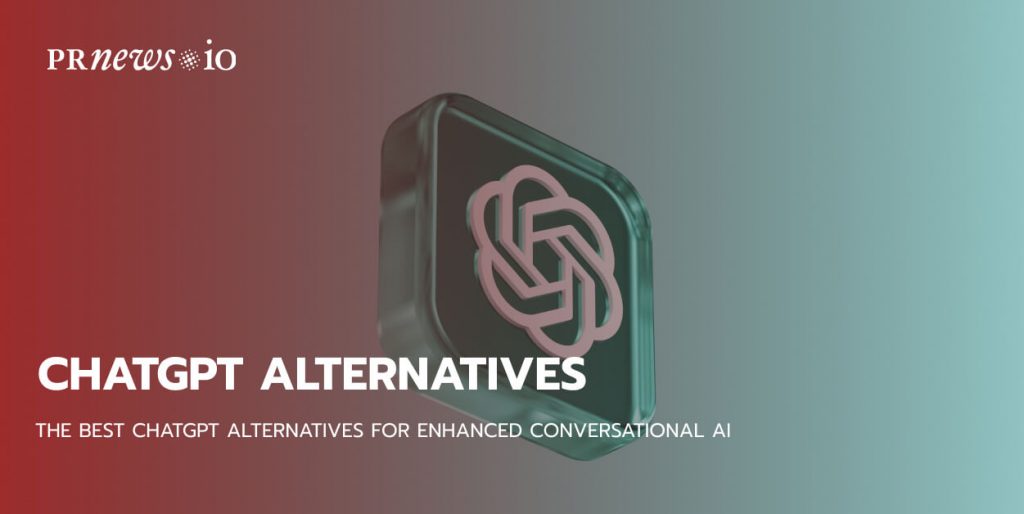
Conversational AI has witnessed significant advancements in recent years, revolutionizing the way we interact with technology. While ChatGPT has been a prominent conversational AI model, it is not without its limitations. To overcome these challenges and elevate the quality of online conversations, it is crucial to explore alternative solutions. This blog post delves into the realm of ChatGPT alternatives, presenting innovative approaches that promise to enhance the conversational AI experience.
In this blog post, we will:
- Discuss the limitations of ChatGPT
- Explore alternative solutions to overcome these limitations
- Examine the potential applications and benefits of these alternatives in real-world scenarios
Join us on this journey as we uncover the future of conversational AI and discover how alternative models can revolutionize online conversations.
| Alternative | Description |
|---|---|
| Dragonfly | A bot powered by OpenAI’s davinci model, excels at short responses and benefits from context in prompts. |
| YouChat | An AI bot similar to ChatGPT that relies on the web for answers and provides immediate access without a waiting list. |
| Perplexity | A ChatGPT alternative for research, integrated with Google, offering capabilities for exploring various topics. |
| Elicit | An AI writing tool that can be used for research, content generation, and more. |
| GPT-4 | The successor to GPT-3, offering advanced natural language processing capabilities. |
| Bing Chat | Microsoft’s AI bot that runs on the same framework as ChatGPT, providing similar answers and abilities. |
| Google Bard | Google’s experimental AI conversational service powered by LAMDA, designed as an alternative to ChatGPT. |
| Tabnine | An automatic code generation tool that works in your IDE, supporting multiple programming languages. |
| GitHub Copilot | AI-powered code suggestion tool developed by GitHub, trained on a vast amount of code snippets. |
| Amazon CodeWhisperer | An AI tool that suggests code snippets as you type, trained using open-source and Amazon library code. |
ChatGPT Alternatives for Writing
If you’re looking for alternatives to ChatGPT for writing purposes, there are several other language models and writing tools available. Here are a few popular options:
- OpenAI Codex (GitHub Copilot): OpenAI Codex, also known as GitHub Copilot, is a language model developed by OpenAI specifically for code generation. It can assist developers in writing code by providing code completions and suggestions.
- Google Cloud Natural Language API: Google Cloud Natural Language API offers a suite of natural language processing capabilities, including sentiment analysis, entity recognition, and content classification. It can be used to enhance your writing or extract insights from text.
- iA Writer: iA Writer is a simple yet powerful writing app available for various platforms. It provides a distraction-free writing environment, markdown support, and seamless integration with cloud storage services.
- IBM Watson Natural Language Understanding: IBM Watson Natural Language Understanding is another API that provides advanced text analysis capabilities. It can help you extract entities, keywords, sentiments, and perform other linguistic analyses.
- Grammarly: Grammarly is a popular writing assistant that can help you improve your grammar, spelling, and writing style. It provides real-time suggestions and corrections as you type, helping you produce error-free and polished writing.
- ProWritingAid: ProWritingAid is a comprehensive writing tool that offers grammar and style checks, readability analysis, word choice suggestions, and more. It also provides detailed reports to help you improve your writing skills.
- Hemingway Editor: Hemingway Editor is a web-based writing tool that focuses on improving readability and clarity. It highlights lengthy and complex sentences, adverbs, and passive voice, allowing you to refine your writing for a more concise and engaging style
Jasper vs. ChatGPT Table
| Feature | Jasper AI | ChatGPT |
|---|---|---|
| AI Model | Jasper AI model | OpenAI’s GPT model |
| Use Case | Content generation, SEO-friendly writing | Conversational AI, language understanding |
| Domain Expertise | Businesses, brands, individuals | Wide range of applications |
| Interaction | Interact with AI and generate content using natural dialog | Text-based interaction |
| Availability | Check availability on Jasper AI platform | Accessible via OpenAI API or web interface |
| Integration | Integration options available | Integration options available |
| Training Data | Training data specific to content generation | Large-scale general language training data |
| Updates | Dependent on platform updates | Dependent on OpenAI model updates |
| Pricing | Pricing details available on Jasper AI | Pricing details available on OpenAI |
These are just a few examples of alternatives to ChatGPT for writing purposes. Each tool has its own strengths and features, so you can choose the one that best suits your specific writing needs.
More ChatGPT Alternatives
Microsoft Bing AI is an AI bot that runs on the same framework as ChatGPT. It is described as an AI-powered version of Microsoft’s search engine, and its answers and abilities are expected to be similar to ChatGPT.
DialoGPT is another AI language model developed by Microsoft Research. It is designed to engage in multi-turn conversations and generate human-like responses. DialoGPT can be considered as an alternative to ChatGPT for conversational AI tasks.
Megatron-Turing Natural Language Generation. Megatron-Turing is an advanced language model developed by NVIDIA, and it can be used for various natural language processing tasks, including natural language generation. It is a powerful alternative to consider for generating human-like text.
Google Bard is powered by Google’s LaMDA (Language Model for Dialogue Applications) AI platform. Bard aims to provide a chatbot experience with a personal touch, allowing users to have human-like conversations with the AI bot.
LaMDA is described as an experimental conversational AI service that enhances natural language processing capabilities. It aims to improve the comprehension and response capabilities of chatbots like Bard AI
Socratic by Google: Socratic is a chatbot alternative developed by Google.
ChatGPT alternative for Coding
GitHub Copilot is a ChatGPT alternative for coding. It is an AI-powered code completion tool developed by GitHub. Copilot uses AI to suggest code snippets as you type and is trained on a vast amount of publicly available code. It aims to assist developers in writing code faster and more efficiently.
Tabnine is mentioned as an alternative for coding and automatic code generation. It is an AI-powered code completion tool that integrates with various IDEs (Integrated Development Environments). Tabnine generates code suggestions based on your previous code and comments, supporting more than 30 programming languages. It aims to enhance developer productivity by providing intelligent code completion.
Amazon CodeWhisperer is mentioned as another alternative for coding. It is described as an AI tool similar to GitHub Copilot, which suggests code snippets as you type.
Copilot vs. ChatGPT Table
| Feature | CoPilot | ChatGPT |
|---|---|---|
| Primary Function | Code generation and suggestions | Conversational AI and language understanding |
| Developed By | GitHub | OpenAI |
| Training Data | Public and private repositories on GitHub | Large-scale general language training data |
| Programming Languages | Supports multiple programming languages | N/A (not language-specific) |
| Integration | Integrated with IDEs and code editors | API and web interface access |
| Usage | Code autocompletion, suggestion of whole code blocks | Text-based conversational interactions |
| Availability | Accessible through GitHub CodeSpaces | Accessible via OpenAI API or web interface |
| Updates | Dependent on GitHub’s development and updates | Dependent on OpenAI model updates |
| Licensing | GitHub Subscription required | OpenAI Subscription may be required |
ChatGPT alternative for translation: DeepL Write, Elsa Speak, Bloom.
ChatGPT alternatives for research: YouChat, Perplexity, Elicit.
ChatGPT alternatives you can talk to: Chinchilla, Replika, Character AI.
ChatGPT alternative for Social media: Poe by Quora.
ChatGPT alternative for productivity: Chatsonic Slack bot, CoGram, Otter.
ChatGPT alternative for building your own AI Chatbot: Botsonic
Limitations of ChatGPT
While ChatGPT, a prominent conversational AI model, has made significant strides in generating coherent responses, it still exhibits certain limitations. One notable challenge is contextual understanding, where ChatGPT can struggle to maintain consistent context and provide relevant responses in complex or ambiguous conversations. Additionally, generating accurate answers and handling controversial topics with sensitivity remain ongoing challenges for the system.
To address the limitations of ChatGPT and advance the field of conversational AI, researchers and developers are actively exploring alternative solutions. These alternatives encompass various approaches, including hybrid models that combine rule-based and machine learning techniques for improved performance, graph-based models that enhance contextual understanding through graph structures, reinforcement learning methods for dynamic conversation management, integration of knowledge graphs for accurate information retrieval, and human-in-the-loop systems that incorporate human feedback to improve accuracy and empathy.
Challenges in Conversational AI
Contextual Understanding
One of the fundamental challenges in conversational AI is achieving accurate and consistent contextual understanding. Conversations often involve multiple turns, references to past statements, and nuanced meanings. AI systems must possess the ability to comprehend context, retain relevant information, and respond appropriately. Overcoming this challenge ensures that conversations flow naturally and effectively.
Generating Coherent and Relevant Responses
Conversational AI systems need to generate responses that are not only coherent but also relevant to the given context. It requires the AI models to grasp the intent behind the user’s query, extract the necessary information, and generate appropriate and meaningful replies. Generating responses that align with user expectations and provide valuable insights enhances the overall conversational experience.
Handling Ambiguous Queries
Ambiguity is a common aspect of human language, and conversational AI systems must be equipped to handle ambiguous queries effectively. When faced with unclear or imprecise questions, AI models should seek clarification from users, offer suggestions, or provide educated guesses to bridge the understanding gap. Handling ambiguity is crucial for delivering accurate and satisfactory responses.
Dealing with Bias and Controversial Topics
Conversational AI systems should navigate bias and controversial topics with caution and fairness. AI models learn from vast amounts of data, and if the training data contains biases, it can inadvertently reflect those biases in responses. It is essential to develop methods that mitigate biases and ensure unbiased and inclusive interactions. Additionally, handling controversial topics requires sensitivity and the ability to present balanced and well-informed perspectives to avoid misinterpretations or exacerbating conflicts.
Alternative Approaches
Hybrid Models: Combining Rule-Based and Machine Learning Techniques
Benefits of Rule-Based Systems
Rule-based systems offer explicit control over generating responses by defining specific rules or patterns. These systems excel in handling structured conversations or providing predefined answers to common queries. Rule-based approaches ensure consistency and accuracy in responses, making them suitable for domains with well-defined knowledge or specific guidelines.
Integration with Machine Learning Models for Improved Performance
Hybrid models leverage the strengths of both rule-based systems and machine learning models. By integrating machine learning techniques, such as neural networks, with rule-based systems, the hybrid models gain the ability to understand unstructured language, capture context, and generate more contextually relevant responses. This integration enhances overall performance, enabling the system to handle a wider range of conversations and adapt to different user inputs.
Graph-Based Models for Better Contextual Understanding
Utilizing Graph Structures to Capture Relationships
Graph-based models represent conversations as interconnected nodes, capturing relationships and dependencies between different elements. By modeling conversations as graphs, these models can maintain context, track references, and understand the flow of information more effectively.
Enhancing Contextual Awareness through Graph-Based Approaches
Graph-based models enable a deeper understanding of conversations by leveraging the relationships between entities, topics, and concepts. By analyzing the graph structure, these models can infer contextual information, disambiguate queries, and provide more accurate and relevant responses.
Reinforcement Learning for Dynamic Conversation Management
Training Models to Optimize Conversation Outcomes
Reinforcement learning techniques allow conversational AI models to learn from interactions and optimize their behavior. Models can be trained to maximize user satisfaction, minimize response latency, or achieve specific conversational goals through trial-and-error learning.
Balancing User Satisfaction and System Efficiency
Reinforcement learning helps conversational AI systems strike a balance between user satisfaction and system efficiency. By learning to make informed decisions during conversations, these models can dynamically adapt their responses to meet user needs while considering resource constraints and time sensitivity.
Knowledge Graph Integration for Accurate Information Retrieval
Building Comprehensive Knowledge Graphs
Knowledge graphs capture structured information and relationships between entities, enabling effective information retrieval. Building comprehensive knowledge graphs involves curating and organizing domain-specific knowledge to provide accurate and reliable responses.
Leveraging Knowledge Graphs for Accurate and Reliable Responses
Integrating knowledge graphs with conversational AI systems allows them to access a vast repository of information. By leveraging knowledge graphs, these systems can retrieve accurate and up-to-date information, enhancing the quality of responses and providing users with reliable information.
Human-in-the-Loop Systems for Improved Accuracy and Empathy
Incorporating Human Feedback in the Learning Loop
Human-in-the-loop systems involve incorporating human feedback during training and inference stages. This feedback helps refine and improve the system’s responses, addressing inaccuracies, biases, and improving the overall user experience.
Addressing Ethical Concerns and Biases
Human-in-the-loop systems provide an opportunity to mitigate biases and ethical concerns in conversational AI. By actively involving humans in the learning loop, these systems can identify and rectify biases, ensure fair and inclusive responses, and promote empathy in interactions.
Evaluating Alternative Solutions
Performance Metrics for Conversational AI Evaluating the performance of alternative solutions in conversational AI requires the consideration of various metrics. These metrics provide insights into the effectiveness and efficiency of the models. Common performance metrics include:
- Response quality: Assessing the coherence, relevance, and accuracy of generated responses.
- Contextual understanding: Measuring the ability to maintain and understand context across multiple turns.
- Latency: Evaluating the response time of the system to ensure timely interactions.
- Coverage: Assessing the system’s ability to handle a wide range of queries and topics.
- Error rate: Measuring the occurrence of incorrect or misleading responses.
- User satisfaction: Capturing user feedback and ratings to gauge overall satisfaction with the conversational experience.
Comparative Analysis of Alternative Models
A comparative analysis of alternative models can provide valuable insights into their strengths, weaknesses, and performance across different aspects. The following table summarizes key features and characteristics of alternative models:
| Model | Approach | Contextual Understanding | Response Quality | Latency | Coverage | Error Rate |
|---|---|---|---|---|---|---|
| Hybrid Model | Rule-based + ML integration | High | High | Low | Medium | Low |
| Graph-Based Model | Utilizing graph structures | High | High | Medium | High | Low |
| Reinforcement Learning | Dynamic conversation management | Medium | Medium | High | High | Medium |
| Knowledge Graph | Integration for information retrieval | High | High | Low | High | Low |
| Human-in-the-Loop | Incorporating human feedback | High | High | Low | High | Low |
Note: The table provides a general overview and may vary based on specific implementations and optimizations.
Assessing User Satisfaction and Engagement
User satisfaction and engagement are crucial indicators of the success of conversational AI systems. Gathering user feedback through surveys, ratings, and qualitative assessments helps assess the overall user experience. Factors to consider when assessing user satisfaction and engagement include:
- User feedback: Analyzing user feedback to understand their perception and identify areas for improvement.
- User retention: Measuring the frequency and duration of user interactions to assess engagement levels.
- Task completion rate: Evaluating the system’s ability to assist users in accomplishing their intended tasks effectively.
- User ratings: Gathering ratings and reviews to gauge user satisfaction and subjective evaluation of the conversational experience.
Evaluating alternative solutions using performance metrics, comparative analysis, and user feedback allows for a comprehensive assessment of their effectiveness, suitability, and user satisfaction, leading to informed decisions in selecting the most appropriate conversational AI models.
ChatGPT Alternatives FAQ
What are ChatGPT alternatives?
ChatGPT alternatives refer to other AI-powered chatbot or language model systems that provide similar capabilities to ChatGPT. These alternatives offer various features such as natural language processing, conversation generation, code generation, translation, and more.
Why would someone look for ChatGPT alternatives?
While ChatGPT is a powerful language model, there might be several reasons why someone would explore alternatives. Some reasons include the need for different pricing options, specific domain expertise, better integration with existing systems, additional features, or improved performance in certain tasks.
Can I use ChatGPT and its alternatives together?
Yes, you can use ChatGPT and its alternatives together. The choice of using a specific alternative depends on your requirements and preferences. You can explore multiple options and leverage their unique features based on the task at hand.
re ChatGPT alternatives free to use?
The availability and pricing of ChatGPT alternatives may vary. Some alternatives offer free tiers or trial periods, while others may require a subscription or payment for full access. It’s recommended to check the pricing and licensing details of each alternative before use.





